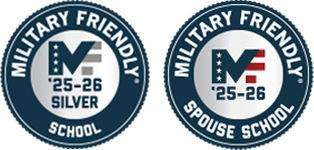Supervisor Accident Investigation Report Guideline
OVERVIEW
An employee injured on the job is required to report the injury to his/her supervisor as soon as possible after the incident/accident. The supervisor is responsible first, to assure that any injured employee is given immediate and proper medical care (as required) and that no one else can be injured and, second, to immediately ensure Human Resources is contacted for an accident report. Environmental Safety & Health staff is available to assist the supervisor with the accident investigation.
The purpose of accident investigation is to develop information on the actual and contributing causes of accidents in order to prevent recurrence. No matter how conscientious the safety effort at the University, accidents are sometimes going to happen due to human or system error. Our goal is to find and remove accident causes and to make the University a safer place to work. Accident investigations help us meet that goal.
Incident
This section describes the incident with specifics on what the injured employee was doing and which body parts (right hand, left lower leg, back of head) were affected. The specific time and place (building, room, area) of the incident is important in the investigation.
The type of injury can be described by such terms as: foreign body in eye, cut, puncture, bruise, sprain, strain, fracture, burn, dermatitis, etc.
INVESTIGATION
The investigation section is completed in narrative format and consists of four parts: description of the incident, cause of the incident, corrective action and industrial injury verification.
Description of Incident
- What was the employee doing at the time of the incident?
- What sequence of events led to the incident
- What were the working conditions and tools being used?
- Any witnesses or contributors to the incident?
- How did the incident happen?
- Some types include:
- Struck against or struck by an object
- Caught in or between
- Slipped
- Tripped
- Overexertion
- Inhaled
- Absorbed
- Ingested
- Contact with electric current
Cause of the Incident
- Causes include unsafe acts or equipment as well as poor or improper training
- Other possible causes may include:
- Improper instruction
- Lack of skill
- Operation without authority
- Horseplay
- Physical impairment
- Failure to warn or secure
- Failure to lockout
- Unsafe position or speed
- Improper protective equipment
- Poor housekeeping
- Unsafe arrangement
- Hazardous condition
- Unsafe process or procedure
- Unsafe lifting or carrying
- Poor ventilation or lighting
- Improper guarding
- Improper maintenance
- Improper safety device
- Improper tool
- Chemical spill
- Lack of time
- Work overload
- Failure to inspect
- Failure to enforce
- No inspection made
- Failure to train
Supervisor Section
Employee Supervisors have the responsibility to investigate incidents of their employees and put in place corrective actions to prevent the reoccurrences.
Incidents occur when hazards escape detection during preventive measures, such as a job or process safety analysis, when hazards are not obvious, or as the result of combinations of circumstances that were difficult to foresee. A thorough accident investigation may identify previously overlooked physical, environmental, or process hazards, the need for new or more extensive safety training, or unsafe work practices.
The primary focus of any incident investigation should be the determination of the facts surrounding the incident and the lessons that can be learned to prevent future similar occurrences. The focus of the investigation should NEVER be to place blame. The process should be positive and thought of as an opportunity for improvement.
Most incidents in the workplace result from unsafe work behaviors. According to the latest research, they represent the direct cause for about 95% of all workplace incidents. Hazardous conditions represent the direct cause for only about 3% of workplace accidents. "Acts of God" account for the remaining 2%.
Root Cause - Effective incident investigation identifies these root causes and recommends strategies to eliminate weaknesses. Incident investigations are a tool for uncovering hazards that either were missed earlier or hazards where controls were defeated. However, it is important to remember that the investigation is only useful when its objective is to identify root causes. In other words, every contributing factor to the incident must be uncovered and recommendations made to prevent recurrence.
The next step is to gather useful information for the root cause analysis about what directly and indirectly contributed to the incident.
- Interview eye witnesses as soon as possible after the incident. Interview witnesses separately, never as a group.
- Interview other interested persons such as supervisors, co-workers, etc.
A successful incident investigation determines not only what happened, but also finds how and why the incident occurred. Investigations are crucial as an effort to prevent a similar or perhaps more disastrous sequence of events. Research has shown that a typical work place incident is the result of many related and unrelated factors that somehow all come together at the same time. Although, this combination of factors normally makes an investigation very time consuming and resource intensive, the good news is that the accident can normally be prevented by removing only a few of the contributing factors.
Corrective actions - This section describes the corrective action that the supervisor has taken or will take to prevent similar incidents from occurring. It is crucial that supervisors determine and make recommendations to eliminate or reduce the root causes discovered. Supervisors shall implement actions to correct the root causes. If root causes are not corrected, it is only a matter of time before a similar incident occurs.
